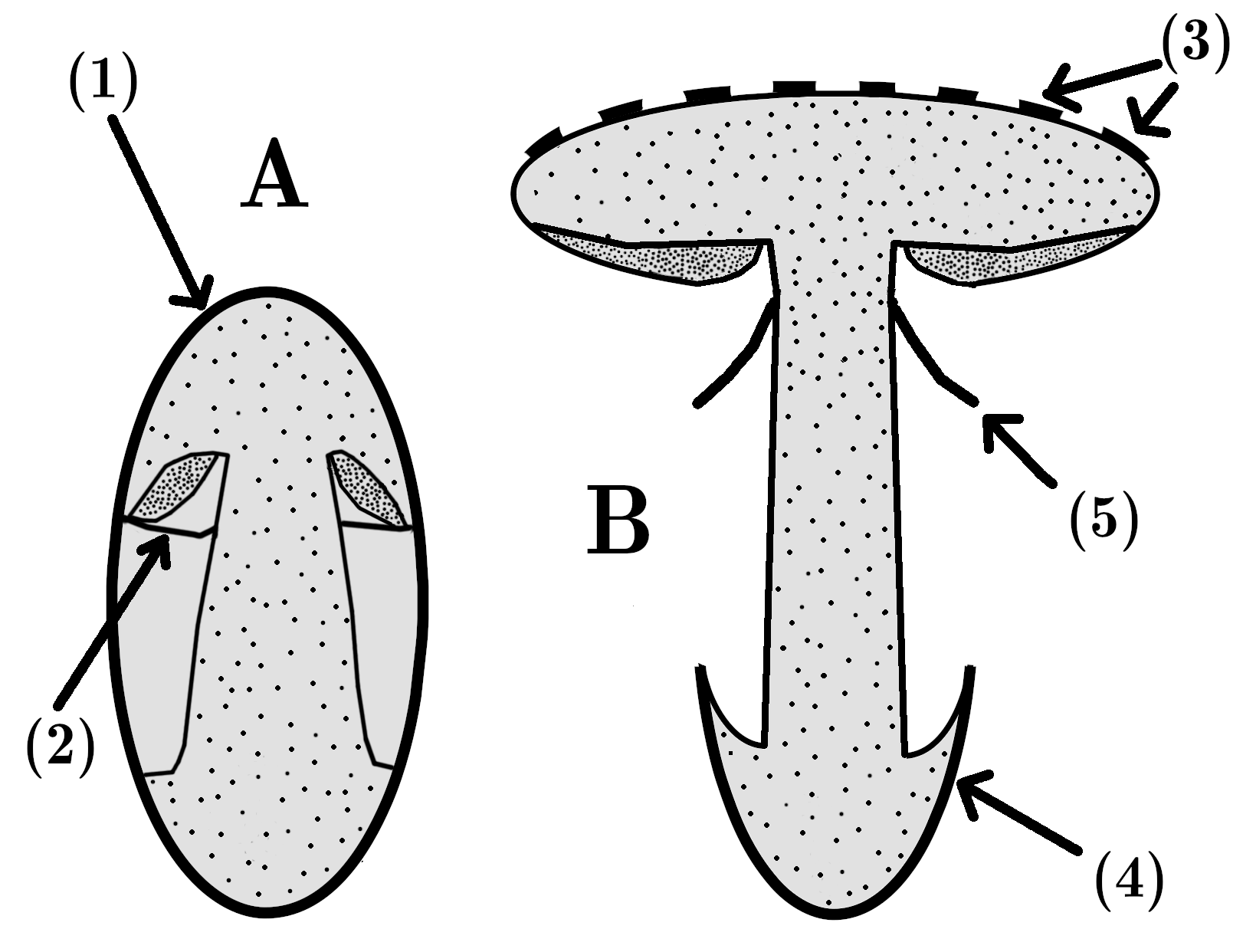Volva (mycology) on:
[Wikipedia]
[Google]
[Amazon]

 In
In
45
, isbn=0-472-03126-0 , url-access=registration , url=https://archive.org/details/100ediblemushroo00kuom/page/45 {{cite book , vauthors=Miller HR, Miller OK , title=Gasteromycetes: Morphological and Developmental Features, with Keys to the Orders, Families, and Genera , publisher=Mad River Press , location=Eureka, California , year=1988 , page=133 , isbn=0-916422-74-7
 In
In mycology
Mycology is the branch of biology concerned with the study of fungi, including their genetic and biochemical properties, their taxonomy and their use to humans, including as a source for tinder, traditional medicine, food, and entheogen ...
, a volva is a cup-like structure at the base of a mushroom
A mushroom or toadstool is the fleshy, spore-bearing fruiting body of a fungus, typically produced above ground, on soil, or on its food source. ''Toadstool'' generally denotes one poisonous to humans.
The standard for the name "mushroom" is ...
that is a remnant of the universal veil
In mycology, a universal veil is a temporary membranous tissue that fully envelops immature fruiting bodies of certain gilled mushrooms. The developing Caesar's mushroom (''Amanita caesarea''), for example, which may resemble a small white sphe ...
, or the remains of the peridium
The peridium is the protective layer that encloses a mass of spores in fungi. This outer covering is a distinctive feature of gasteroid fungi.
Description
Depending on the species, the peridium may vary from being paper-thin to thick and rubbe ...
that encloses the immature fruit bodies of gasteroid fungi. This macrofeature is important in wild mushroom identification because it is an easily observed, taxonomically
In biology, taxonomy () is the scientific study of naming, defining ( circumscribing) and classifying groups of biological organisms based on shared characteristics. Organisms are grouped into taxa (singular: taxon) and these groups are given ...
significant feature that frequently signifies a member of Amanitaceae
The Amanitaceae is a family of mushroom-forming fungi. ''Amanita'' Pers. is one of the most specious and best-known fungal genera. The family, also commonly called the amanita family, is in order Agaricales, the gilled mushrooms. The family con ...
. This has particular importance due to the disproportionately high number of deadly poisonous
Poison is a chemical substance that has a detrimental effect to life. The term is used in a wide range of scientific fields and industries, where it is often specifically defined. It may also be applied colloquially or figuratively, with a broa ...
species contained within that family.
A mushroom's volva is often partially or completely buried in the ground, and therefore care must be taken to check for its presence when identifying mushrooms. Cutting or pulling mushrooms and attempting to identify them later without having noted this feature could be a fatal error.
References
{{Reflist, refs= {{cite book , vauthors=Kirk PM, Cannon PF, Minter DW, Stalpers JA , title=Dictionary of the Fungi , edition=10th , publisher=CAB International , location=Wallingford, UK , year=2008 , page=727 , isbn=978-0-85199-826-8 {{cite book , author=Kuo M. , title=100 Edible Mushrooms , publisher=The University of Michigan Press , location=Ann Arbor, Michigan , year=2007 , pag45
, isbn=0-472-03126-0 , url-access=registration , url=https://archive.org/details/100ediblemushroo00kuom/page/45 {{cite book , vauthors=Miller HR, Miller OK , title=Gasteromycetes: Morphological and Developmental Features, with Keys to the Orders, Families, and Genera , publisher=Mad River Press , location=Eureka, California , year=1988 , page=133 , isbn=0-916422-74-7
See also
*Partial veil
In mycology, a partial veil (also called an inner veil, to differentiate it from the "outer", or universal veil) is a temporary structure of tissue found on the fruiting bodies of some basidiomycete fungi, typically agarics. Its role is to isola ...
Fungal morphology and anatomy